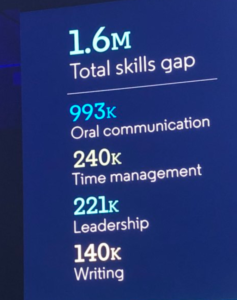Have you been feeling like you don’t fit in recently? Like both sides might not be what you’re looking for? Like ‘these folks are crazy!”?
Welcome to America!
The Atlantic had a brilliant article recently where a study from Harvard says it’s not ‘you’, it’s actually ‘them’ –
“On social media, the country seems to divide into two neat camps: Call them the woke and the resentful. Team Resentment is manned—pun very much intended—by people who are predominantly old and almost exclusively white. Team Woke is young, likely to be female, and predominantly black, brown, or Asian (though white “allies” do their dutiful part). These teams are roughly equal in number, and they disagree most vehemently, as well as most routinely, about the catchall known as political correctness.
Reality is nothing like this. As scholars Stephen Hawkins, Daniel Yudkin, Miriam Juan-Torres, and Tim Dixon argue in a report published Wednesday, “Hidden Tribes: A Study of America’s Polarized Landscape,” most Americans don’t fit into either of these camps. They also share more common ground than the daily fights on social media might suggest—including a general aversion to PC culture.”
As you know, if you’re a regular reader of The Project, I tend to be of the not politically correct persuasion, but not necessarily outwardly so. I like humor. The best humor is usually not politically correct, regardless of what side you’re on politically. I like to believe I have a highly tuned sense of humor, so I can find something funny, when I know it’s wrong, because, context matters.
Most members of the “exhausted majority,” and then some, dislike political correctness. Among the general population, a full 80 percent believe that “political correctness is a problem in our country.” Even young people are uncomfortable with it, including 74 percent ages 24 to 29, and 79 percent under age 24. On this particular issue, the woke are in a clear minority across all ages.
Youth isn’t a good proxy for support of political correctness—and it turns out race isn’t, either.
Whites are ever so slightly less likely than average to believe that political correctness is a problem in the country: 79 percent of them share this sentiment. Instead, it is Asians (82 percent), Hispanics (87percent), and American Indians (88 percent) who are most likely to oppose political correctness. As one 40-year-old American Indian in Oklahoma said in his focus group, according to the report:
It seems like everyday you wake up something has changed … Do you say Jew? Or Jewish? Is it a black guy? African-American? … You are on your toes because you never know what to say. So political correctness in that sense is scary.
So, for the most part, we tend to look at political correctness the same – we don’t agree it’s helping. In fact, it might be driving us further apart because those who believe it strongly, on either side, use it as black or white, without any opportunity for gray, or understanding.
“There is, however, plenty of additional support for the idea that the social views of most Americans are not nearly as neatly divided by age or race as is commonly believed. According to the Pew Research Center, for example, only 26 percent of black Americans consider themselves liberal. And in the More in Common study, nearly half of Latinos argued that “many people nowadays are too sensitive to how Muslims are treated,” while two in five African Americans agreed that “immigration nowadays is bad for America.”
So, what’s the risk? The risk is we tend to listen to a minority viewpoint, on both sides, believing it’s at least a 50% viewpoint when in reality it might only be a 1/5 or less viewpoint of the whole. By the way, we do this in business as well, all the time! Your executives want to know how your employees are feeling, so you do a survey of your 1,000 employees.
200 actually perform the survey, 1/5, and we go back to our executive team and say our “employees” believe “X”. So, we need to change X, Y, and Z. When in reality, only 20% of employees actually believe “X”. And we wonder why we can never really get our arms around engagement!
The problem of political correctness on worldviews shows this same behavior:
“The gap between the progressive perception and the reality of public views on this issue could do damage to the institutions that the woke elite collectively run. A publication whose editors think they represent the views of a majority of Americans when they actually speak to a small minority of the country may eventually see its influence wane and its readership decline. And a political candidate who believes she is speaking for half of the population when she is actually voicing the opinions of one-fifth is likely to lose the next election.”
I have so many friends who couldn’t believe that Trump was voted President (for the official record – I did not vote for Trump! But I understand how it happened!), and they are 100% sure he won’t be voted in again. 100%!
Yet, we fail to understand the majority in the middle, caught between outliers on both sides, who are being continually hammered for not being politically correct and thinking this will magically change them to the correct side. So, I’m not Team Woke or Team Resentful, I’m Team Somewhere in the Middle, but I’m definitely far from alone!


